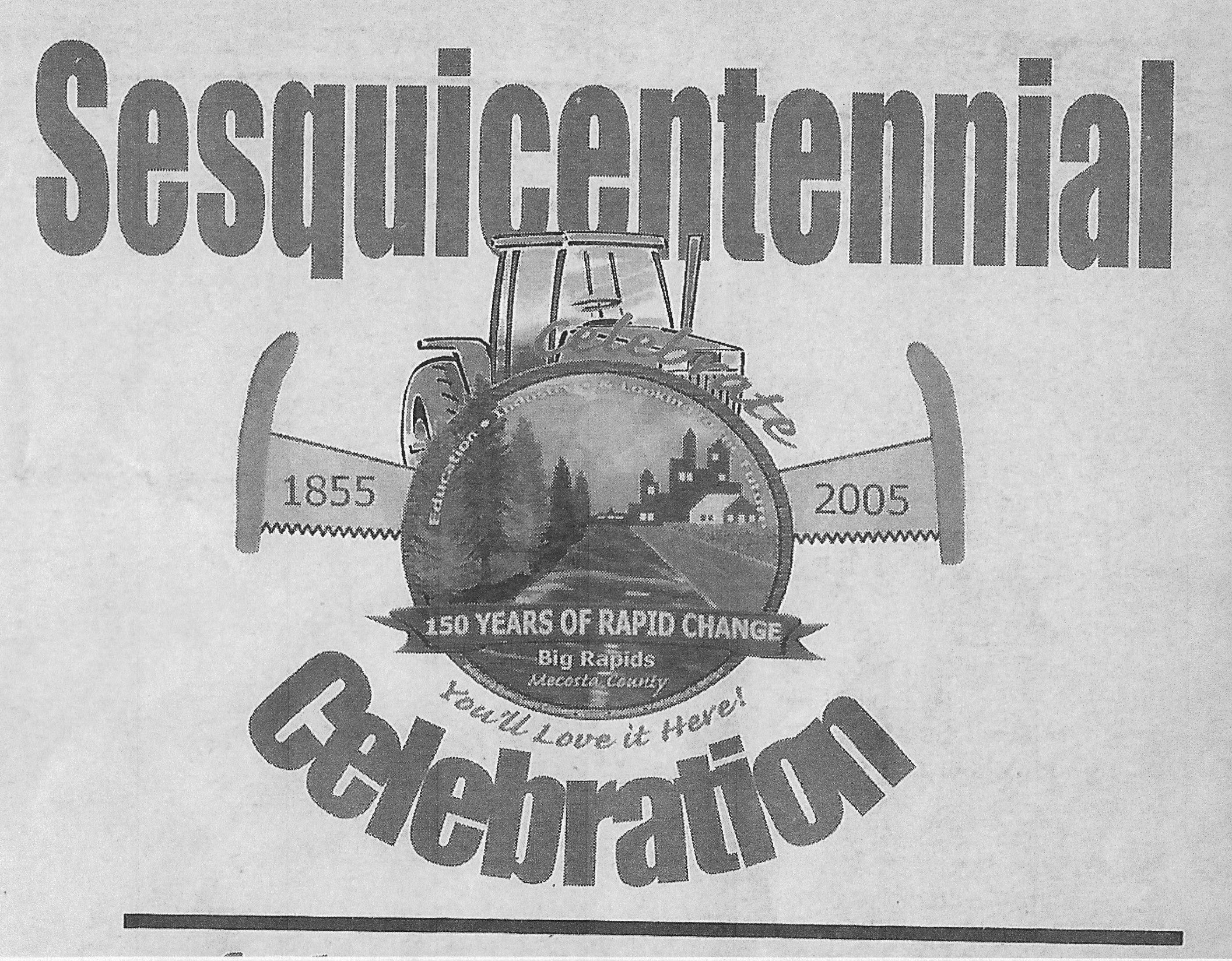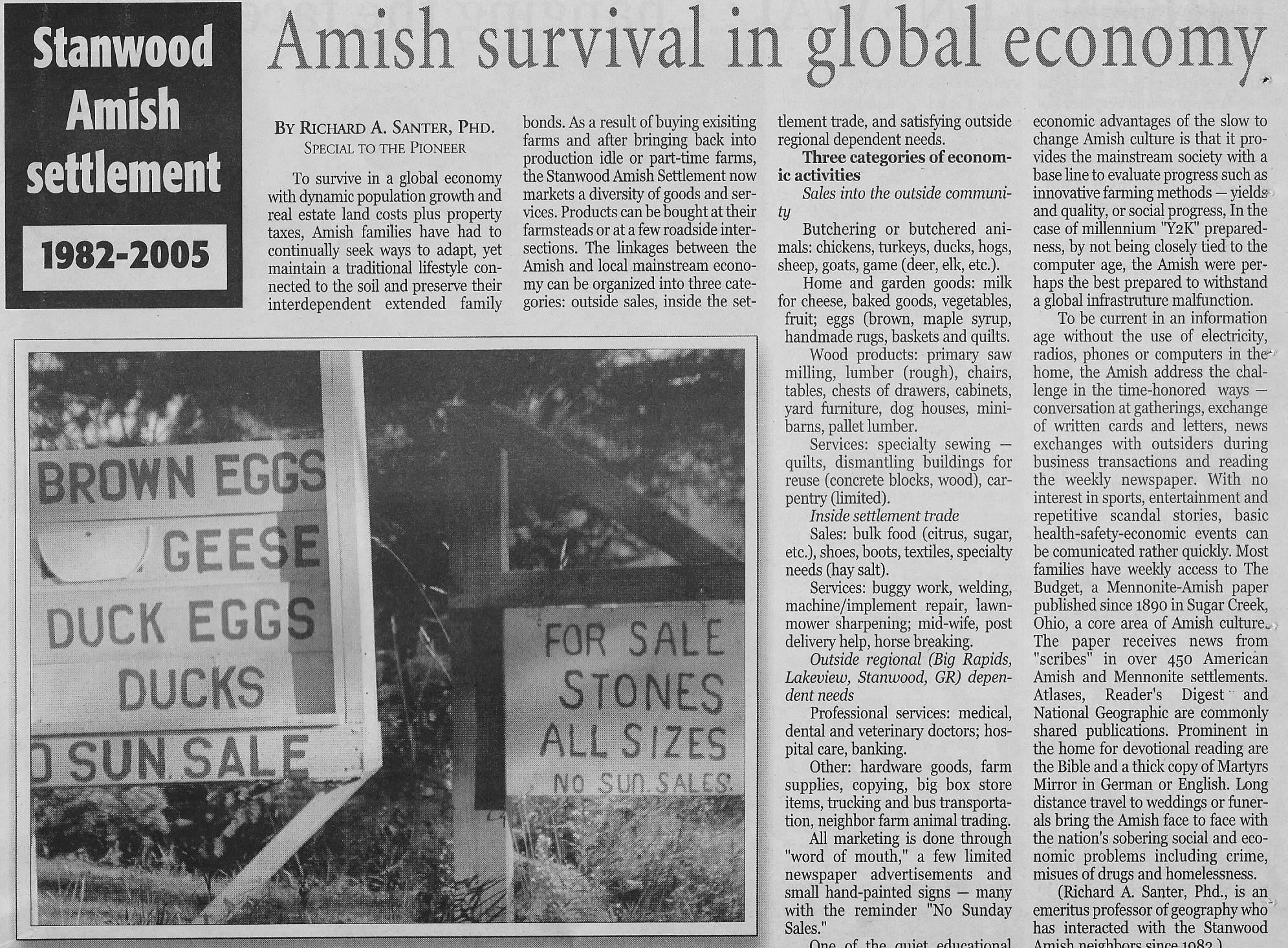
Part II - Business, a supplement to the Big Rapids Pioneer Newspaper. Used with permission.

AMISH SURVIVAL IN GLOBAL ECONOMY
By Richard A. Santer, PHD. Special to the Pioneer
To survive in a global economy with dynamic population growth and real estate land costs plus property taxes, Amish families have had to adapt, yet maintain a traditional lifestyle connected to the soil and preserve their interdependent extended family bonds. As a result of buying existing farms and after bringing back into production idle or part-time farms, the Stanwood Amish Settlement now markets a diversity of goods and services. Products can be bought at their farmsteads or at a few roadside intersections. The linkage between the Amish and local mainstream economy can be organized into three categories: outside sales. inside and settlement trade, and satisfying outside regional dependent needs.
Three categories of economic activities
Sales into the outside community
Butchering or butchered animals, chickens, turkeys, ducks, hogs, sheep, goats, game (deer, elk, etc.)
Home and garden goods, milk for cheese, baked goods, vegetables, fruit; eggs (brown), maple syrup, handmade rugs, baskets and quilts.
Wood products: primary saw milling, lumber (rough), chairs, tables, chests of drawers, cabinets, yard furniture, dog houses, minibarns, pallet lumber.
'
Services: specialty sewing - quilts, dismanteling buildings for reuse (concrete blocks, wood), carppentry (limited)
Inside Settlement trade:
Sales: bulk food (citrus, sugar, etc.) shoes, boots, textiles, specialty needs (hay salt)
Services: buggy work, welding, machine/implement repair, lawn mowers, sharpening; mid-wife, post delivery help, horse breaking.
Outside regional (Big Rapids, Lakeview, Stanwood, GR) dependent needs.
Professional services: medical, dental, and veterinary doctors; hospital care, banking.
Other: hardware goods, farm supplies, copying biug boix store items, trucking and bus transportation, neighbor farm animal trading
All marketing is done through "word of mouth", a few limited newspaper advertisements and small hand painted signs - many with the reminder "NO Sunday Sales."
One of the quiet educational economic advantages of the slow to change Amish culture is that it provides the mainstream society with a base line to evwaluate progress such as innovative farming methods - yields and quality, or social progress. In the case of millennium "Y2K" preparedness, by not being closely tied to the computer age, the Amish were perhaps the best prepared to withstand a global infrastructure malfunction.
To be current in an information age without the use of eletricity, radios, phones, or computers in their home, the Amish address the challange in the time-honored ways - conversation at gatherings, exchange of written cards and letters news exchanges without outsiders during business transactions and reading the weekly newspaper. With no interest in sports, entertainment and repetitive scandal stories, basic health-safety-economic events can be communicated rather quickly. Most families have weekly access to The Budget, a Mennonite-Amish paper publiched since 1890 in Sugar Creek, Ohio, a core area of Amish culture. The paper receives news from "scribes" in over 450 American Amish and Mennonite settlements. Atlases, Reader's Digest and National Geographic are commonly shared publications. Prominent in the homefor devotional reading are the Bible and a thick copy of Martyrs Mirror in German or English. Long distance travel to weddings or funerals bring the Amish face to face with the nation's sobering social and economic problems including crime, misuses of drugs and homelessness.
(Richard A. Santer, Phd., is an emeritus professor of geography who has intereacted with the Stawood Amish neighbors since 1982.
Return to Mecosta sesquicentennial Page
Return to Home Page


